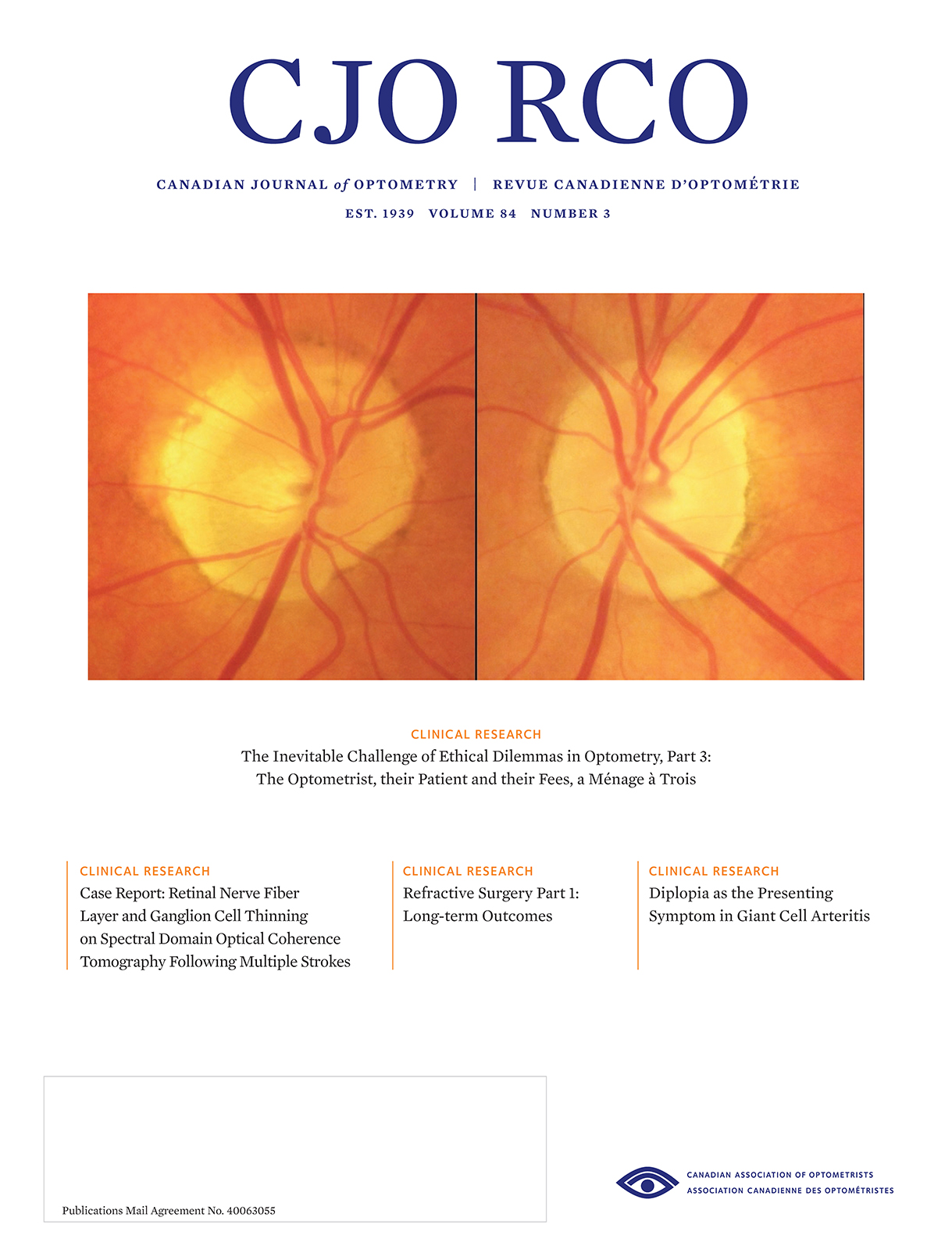Diplopia as the presenting symptom in giant cell arteritis
DOI:
https://doi.org/10.15353/cjo.v84i3.1971Keywords:
abducens palsy, cranial nerve palsy, diplopia, giant cell arteritis, temporal arteritisAbstract
Acquired cranial nerve palsies commonly present to primary eye care clinics and are associated with a variety of etiologies. While microvascular ischemia is the most common association in adults over age fifty, cranial nerve palsies can be associated with other more insidious etiologies, like giant cell arteritis (GCA). There are traditional clinical guidelines for additional diagnostic testing in acute cranial nerve palsies to help identity the other non-microvascular causes, but the guidelines do not specifically address GCA. Although rare, clinicians need to be aware that diplopia can be associated with GCA and use systemic symptoms like jaw claudication and neck pain to screen all acute cranial nerve palsies in adults over age fifty. This case report highlights an uncommon presentation of GCA, emphasizes the importance of broadening a diplopia differential diagnosis list, and provides a brief GCA review.
Published
How to Cite
Issue
Section
License
Copyright (c) 2022 Cari L. Nealon, OD, FAAO, Rachael L. Canania, OD, FAAO

This work is licensed under a Creative Commons Attribution-NonCommercial-NoDerivatives 4.0 International License.


